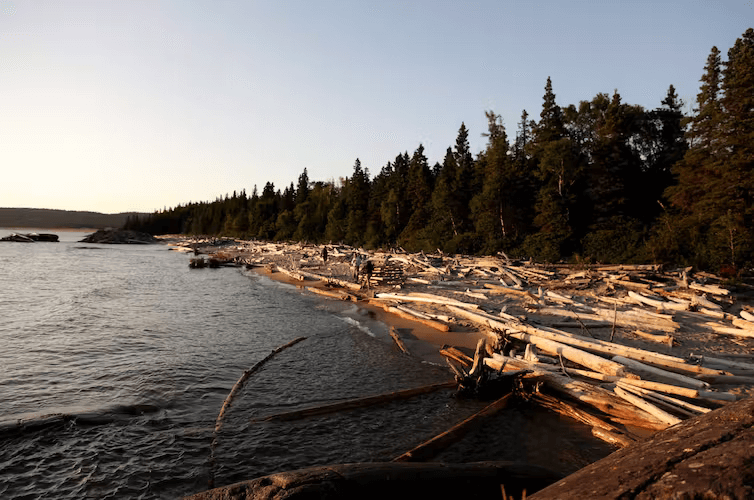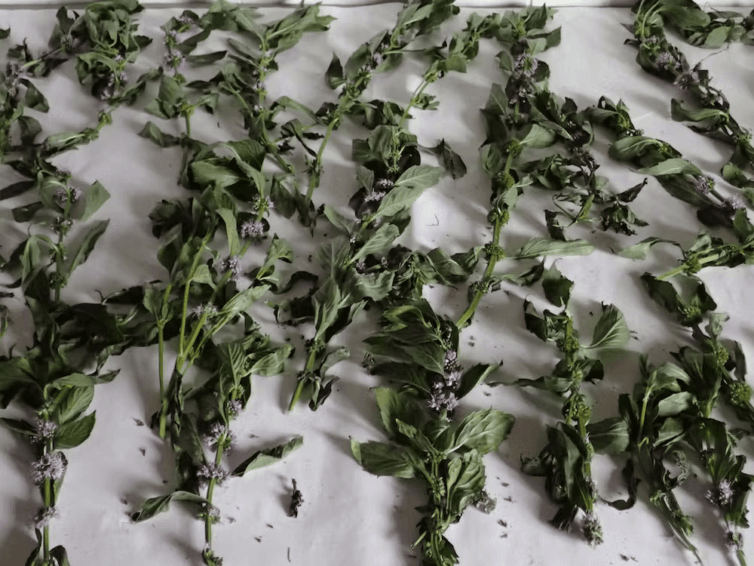Labrador Tea, fireweed, chokecherry, and raspberry are some of the boreal plants that are classified as weeds by the Canadian Weed Science Society. These plants are targeted with herbicide by logging companies across the Canadian boreal forest.
However, these boreal plant species are important traditional plants for many Indigenous Peoples in Canada and around the world. In addition to their use as food, these traditional native plants hold tremendous medicinal, ceremonial, and material value.
These plant species thrived before the arrival of Europeans and are respected and cared for by Indigenous communities, in ways that help increase biocultural diversity.
As a cultural and environmental anthropologist, I have been working for and with First Nations communities in the boreal forests in Alberta since 2006. In my recently published paper, I reveal how the misappropriation of these plants from traditional territories is grounded in a colonial bias for the economic value of plants.
Boreal forests under threat
Over recent decades, boreal forests in Canada have been facing numerous threats, including attempts to extract plants for economic gain or eradicate them using herbicides.
The issue lies in what gets referred to as "merchantable timber" versus the abundance of boreal forest plants that cover the ground below the trees.

When government agencies and logging companies follow their duty to consult First Nations, they tend to overlook expressed concerns about the destruction of traditional plants that grow in abundance.
For example, balsam and aspen poplar trees, birch trees, Labrador Tea, blueberries, and wild mint are all plants that grow in abundance in the boreal forest that have high cultural value.
In the consultation process, when an Elder or community member identifies these plants for protection, company representatives often respond saying that these plants grow throughout the forest, so their destruction has no significant impact on inherent rights protected by treaty.
This outside ruling can affect First Nation members' access to their particular familial stewardship area.
The loss of access to seemingly abundant plants is exacerbated by the use of the herbicide glyphosate in the reforestation process, and along roads, pipelines, and power lines.
Plants with great nutritional and medicinal value like Labrador Tea are sprayed so that they do not compete with monocropping reforestation practices that focus on timber. This reflects a bias toward merchantable timber rather than a biodiverse and healthy forest.
Boreal destruction impacts Indigenous communities
When people lose their collecting areas, they have to search larger areas for the same plants, request access in other people's areas and risk collecting plants contaminated by volatile organic compounds, heavy metals, or herbicides.
Research in the boreal forest has revealed that glyphosate remains in plant tissues for at least a decade. The communities I collaborate with during my research continue to be very concerned about the use of herbicides in their territories, and with reason.

Elders from First Nations communities are also concerned about the impacts of bioaccumulation - the gradual accumulation of substances such as pesticides or other chemicals through the food chain. These concerns are based on Elders' own systems of natural law, oral traditions, and enacting respect and reciprocity in the forest.
Reconciliation includes plant species
As Canada attempts to reconcile with Indigenous communities through the Truth and Reconciliation Commission of Canada Calls to Action, the recognition of species of traditional value is critical in this process.
Calls to Action for improvements in Indigenous-centred education, youth programs, language and culture, and health supports are connected to people's abilities to participate in land-based activities. Plant species must be available for these activities to be possible.
The availability of these species means that they need to be respected and conserved based on Indigenous approaches and ecological knowledge.
Not caring for plant species in the context of Indigenous natural legal systems ignores the ancient and ongoing stewardship by Indigenous Peoples living within the boreal forests. Ignoring native species results in the continued misappropriation of traditional territories, one plant at a time.
This article is republished from The Conversation under a Creative Commons licence. Read the original article.
Related: Study bridges Traditional Indigenous Knowledge, Western science